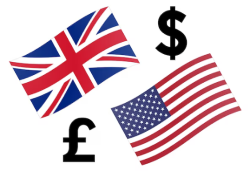
Flexity Analysis for GBPUSD
Forecast Overall(Short-Term, Long-Term): ST=Undecided LT=Probably Up
Forecast Methods(Short-Term, Long-Term):
[Method0] ST=Same LT=Same
[Method1] ST=Down LT=Up
[Method2] ST=Up LT=Same
FlexityIndicator Analysis Method(0)
Short-Term: Long-Term: The long-term outlook for GBP/USD is for the price to remain within a tight range of $1.32 to $1.38 with 90% probability over the next three months. This suggests limited significant movement in either direction, indicating that the price is expected to neither go up nor down substantially but rather stay volatile within this narrow band. **Answer:** The long-term expectation for GBP/USD is that it will stay within a tight range, not showing a clear upward or downward trend.
Result: [Method0] ST=Same LT=Same
FlexityIndicator Analysis Method(1)
Short-Term: Based on the analysis of the provided information, **the price for GBP/USD is expected to go down in the short term**. ### Key Points Supporting the Conclusion: 1. **Price Predictions**: The market suggests a potential decline towards 1.2470 with resistance at 1.26, indicating a bearish sentiment. 2. **Market News**: Volatility due to concerns over UK tax policies and poor PMI data has negatively impacted GBP/USD. 3. **Factors Impacting GBPUSD**: Weak macroeconomic data and political instability in the UK, along with the strength of the US dollar, are contributing to downward pressure. ### Summary: While there are some bullish forecasts from institutions like ING and Morgan Stanley, the overall market conditions and predictions indicate a downward trend for GBP/USD in the short term. Long-Term: The long-term outlook for GBPUSD is expected to go up. While there are bearish predictions from Goldman Sachs and concerns about UK tax policies, the majority of forecasts, particularly from Morgan Stanley and ING, suggest an upward trend. Additionally, the Bank of England's supportive policies likely bolster the pound, contributing to a bullish sentiment in the long run.
Result: [Method1] ST=Down LT=Up
FlexityIndicator Analysis Method(2)
Short-Term: Based on the extracted information and analysis of the factors influencing GBP/USD: 1. **Dollar Weakness:** The US dollar has weakened due to poor labor market data, which could lead to further depreciation of the dollar against other currencies, including the pound. 2. **BOE Policy:** The Bank of England's recent interest rate cut and re-vote suggest a cautious stance, but this does not necessarily indicate immediate weakening of GBP unless there are further policy changes. 3. **Market Sentiment:** Improved risk sentiment is likely to support positive movements across asset classes, including currencies like the pound. 4. **US CPI Report:** The upcoming CPI data will be critical in determining short-term trends. If inflation is lower than expected, it could lead to further dollar weakness and support GBP gains. **Conclusion:** Given the current factors, it is expected that the price for GBP/USD is likely to **go up** in the short term due to dollar weakness, improved market sentiment, and potential developments from the US CPI report. Long-Term: Based on the analysis: - **Historical Context**: GBP/USD typically underperforms in August, but last year (2024) it showed positive trends and may repeat this performance in 2025. - **Current Market Conditions**: The price is currently flat at 1.3440, indicating a stable market after absorbing negative data. - **Economic Indicators**: Upcoming reports like the US CPI could influence Fed policies and affect exchange rates, adding uncertainty. Considering these factors, it's reasonable to expect that GBP/USD may remain stable or possibly show an upward trend, especially given last year's performance. Therefore, the expectation is for the price to **remain stable** in the long term.
Result: [Method2] ST=Up LT=Same
